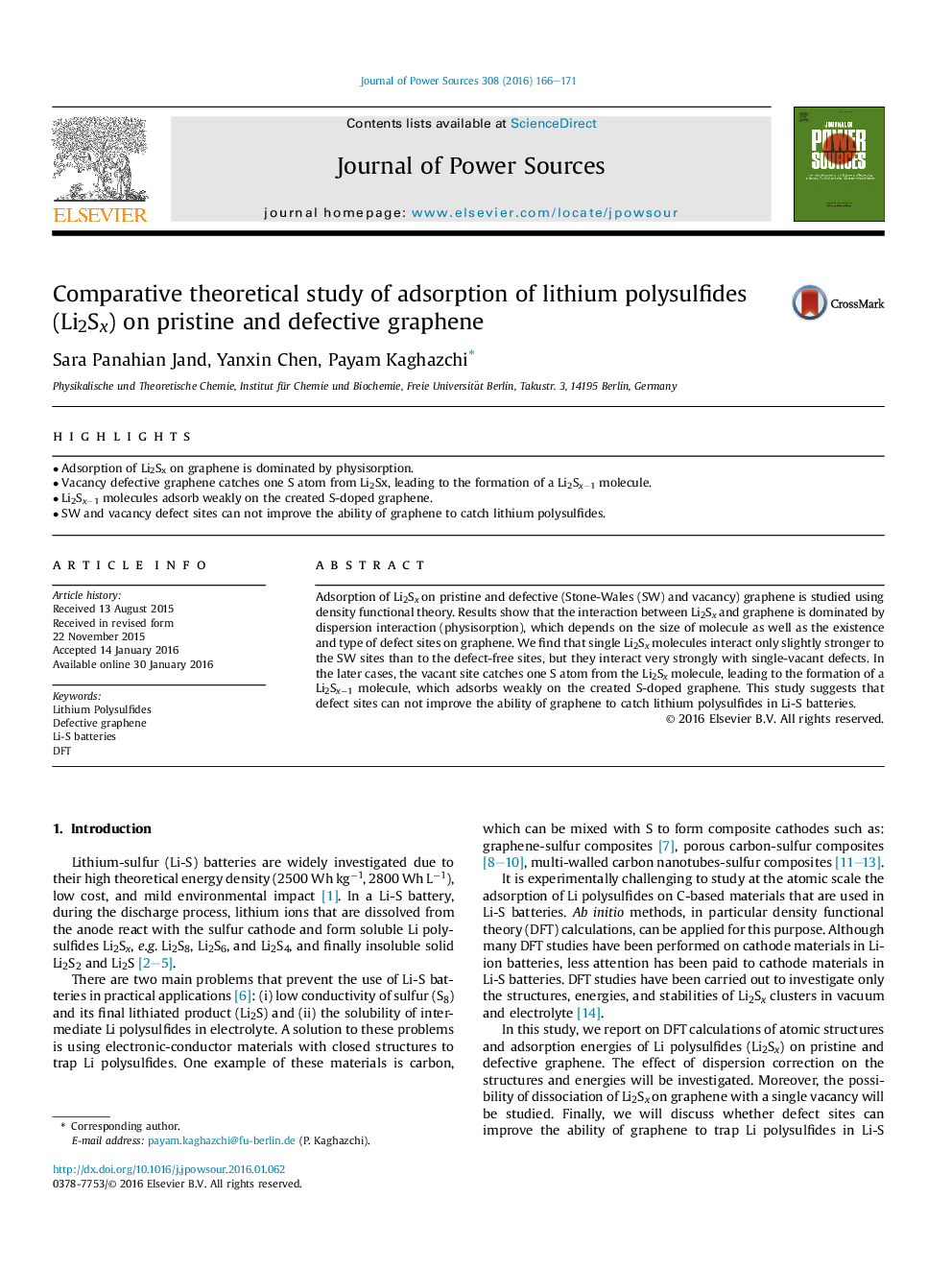| Article ID | Journal | Published Year | Pages | File Type |
|---|---|---|---|---|
| 1285553 | Journal of Power Sources | 2016 | 6 Pages |
•Adsorption of Li2Sx on graphene is dominated by physisorption.•Vacancy defective graphene catches one S atom from Li2Sx, leading to the formation of a Li2Sx−1 molecule.•Li2Sx−1 molecules adsorb weakly on the created S-doped graphene.•SW and vacancy defect sites can not improve the ability of graphene to catch lithium polysulfides.
Adsorption of Li2Sx on pristine and defective (Stone-Wales (SW) and vacancy) graphene is studied using density functional theory. Results show that the interaction between Li2Sx and graphene is dominated by dispersion interaction (physisorption), which depends on the size of molecule as well as the existence and type of defect sites on graphene. We find that single Li2Sx molecules interact only slightly stronger to the SW sites than to the defect-free sites, but they interact very strongly with single-vacant defects. In the later cases, the vacant site catches one S atom from the Li2Sx molecule, leading to the formation of a Li2Sx−1 molecule, which adsorbs weakly on the created S-doped graphene. This study suggests that defect sites can not improve the ability of graphene to catch lithium polysulfides in Li-S batteries.
